Cardamom Cultivation Guide:
Introduction to Cardamom Cultivation:- Well, what is cardamom? It is nothing but a dried fruit of a tall perennial exotic tropical herbaceous plant. Cardamom is a queen of spices and popularly known as “Elachi” or “Elaichi” in India. This spice is native to Western Ghats of South India. Cardamom is being used in preparation of many Asian dishes. Apart from this, cardamom oil is also used in flavouring processed food, cordials and Ayurvedic medicines. This spice is also used in confectionery, beverages and liquors. Cardamom has a strong, unique aroma taste and black cardamom has a distinctly smokey, though not bitter, aroma just like mint. Small cardamom has excellent demand in Middle East market and Asian markets. India occupies second position in production and export of cardamom after Guatemala. Cardamom spice is considered as one of the most world third expensive spices after vanilla and saffron in the market. In this article, let us discuss more about small cardamom though there are two types of cardamoms are grown.
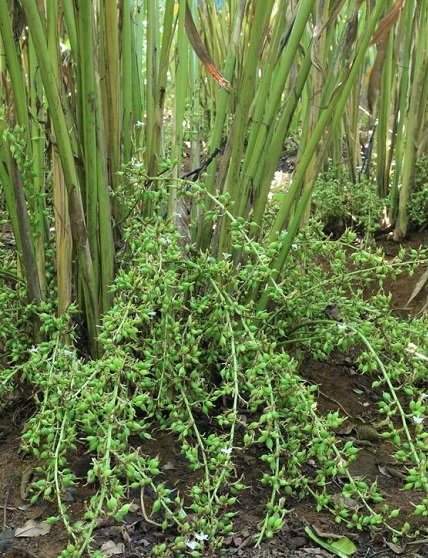
Scientific Name or Botanical Name of Cardamom Plant:- Elettaria cardamomum.
Family Name of Cardamom Plant:- Zingiberaceae.
Genus of Cardamom Plant:- Elettaria.
Top Production Countries of Cardamom:- The following are some of the major production countries of cardamom in the world.
- Guatemala
- India
- Sri Lanka
- Saudi Arabia
- Kuwait
- Indonesia
- Nepal
- Bhutan
- Tanzania
- Iran
Cardamom Names in World Languages:- kardemom (Afrikaans), Cardamom (Catalan), Kardemom (Dutch), Kardamom (German), Kardimomma (Icelandic), Кардамон (Mongolian), kardamon (Polish), heyal (Somali), Kardamom (Albanian), Albanian (Bosnian), Kardemon (Estonian), Kakoules (Greek), kardimommur (Irish), 백두구 (Korean), Sukumel (Nepali), Cardamomo (Portuguese), кардамом (Serbian), Cardamomo (Spanish), Habbahan (Arabic), Kardamon (Bulgarian), Baidoukou (Chinese), kardamono (Filipino), Cardamomo (Italian), Kardemomme (Norwegian), กระวาน (Thai), Bạch đậu khấu (Vietnamese), Անդրիտակ (Armenian), Srdiš (Croatian), kardemumma (Finnish), Hel (Hebrew), Karudamon (Japanese), Īstais kardamons (Latvian), cardamom (Romanian), karadamungu (Sinhalese), Krako sbat(Cambodian), kardamom (Czech), Cardamome (French), Kardamom (Macedonian), Kardamon (Russian), Karde-mumma (Swedish), kakule (Turkish), Kardemomme (Danish), Ili (Georgian), kardámom (Hungarian), Buah pelaga (malay), Hel (Persian), and 小豆蔻 (Taiwanese).
Cardamom Names in Indian Languages:- Cardamom (English), Choti Elaichi (Hindi), Elakkai (Tamil), Elakkaya / Elakka (Malayalam),Eachi / Velchi (Marathi), Aleicha / Alaichi (Oriya), Elcho / Elaychi (Gujarati),Yalakulu / Elaichi (Telugu), Yalakki / Yelachi (Kannada), Elach / Garate (Bengali), Elaichi (Manipuri), Kalo Elu / Yelo (Konkani), Elaichi (Punjabi), Elakkai (Tulu), Ilachi (Assamese), Aa / Lbuduaa (Kashmiri), Ilaychi / Elaisi(Urdu).
Cardamom Production States in India:- Small cardamom spice is grown mostly in Western Ghats of South India. The following states are the major producers of cardamom in South India.
- Kerala : 77%
- Karnataka : 16%
- Tamil Nadu : 7%
When it comes large cardamom, the following are the major production states in India.
- Sikkim : 83%
- West Bengal: 17%
Health Benefits and Uses of Cardamom:- The following are some of the health benefits of cardamom (elachi).
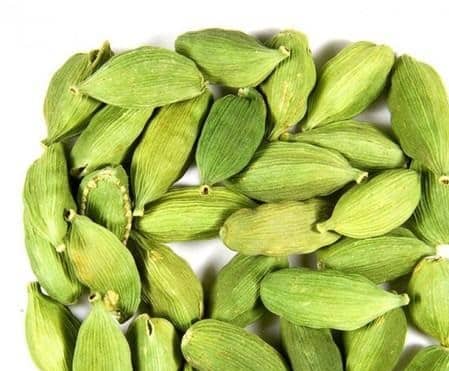
- Cardamom is good for digestion
- Cardamom detoxify the body eliminate waste through the kidneys
- Cardamom has an excellent diuretic properties
- Cardamom is good for oral health
- Cardamom is good for cold and flu
- Cardamom helps in reducing blood pressure
- Cardamom prevents dangerous blood clots
- Cardamom has excellent antioxidant and anti-inflammatory properties
- Cardamom is good remedy for Hiccups
Varieties (Cultivars) of Cardamom:- Cardamom is mainly grouped into two categories; Green and Black. True or small cardamom comes under green cardamom category and the scientific name of green cardamom is “Elettaria cardamomum”. Black or Brown or large cardamom comes under black cardamom group whose scientific name is “Amomum costatum and Amomum subulatum”.
Under these main categories, there many commercial varieties or improved varieties of cardamom grown in the world.
Mudigare 1, PV1, CCS1, SKP14, ICAR 1, ICAR 2, SKP-14 Thirumali are some of the high yielding commercial or hybrid improved small cardamom varieties in India. Contact your local horticulture department for suitable high yielding cardamom varieties specific to your region.
Bebo, Bharlangey, Golsey, Ramla, Ramsey, and Sawney are some of the commercial varieties of big cardamom.
Factors that influence cardamom price in the market:-
- Freshness, color, aroma and size of the cardamom
- Production in competing countries such as Guatemala
- Average annual production
- Seasonal variations and time of arrival of the crop in the market
- Climatic conditions
Climate Requirement for Cardamom Cultivation:- For any crop, climate is one of the most important factor to achieve your goal. Cardamom grows well in tropical regions with the annual rainfall ranges from 1,500 to 4,000 mm and it thrives very well under temperature range of 10°C to 36°C and at an altitude of 650 mm to 1200 mm above msl (mean sea level).
Soil Requirement for Cardamom Cultivation:- Well, small cardamom crop requires soils which are good in organic matter (nutrients) with good drainage. However, loamy soils are ideal for commercial farming of small cardamom. Cardamom can grow very well in the soils where soil pH range is about 5.0 to 6.5 are best for the growth of these plants. You can achieve good crop yield where the Soil is rich in nitrogen ‘N’ and low to medium in ‘P’ and ‘K’.
Propagation, Seed Rate and Seed Treatment in Cardamom Cultivation:- Cardamom crop is propagated by seeds and vegetative method (Through suckers). Vegetative method is becoming more popular as this ensures true to type planting material of high yielding. When you select seedlings, they must be free from pests and diseases which can be best suited for clonal multiplication of high yielding cultivars (varieties).
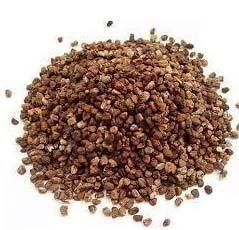
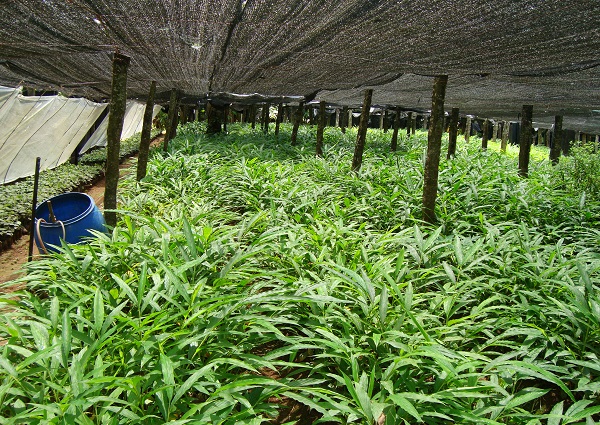
Land Preparation, Planting and Spacing in Cardamom Cultivation:- Preparation of land is the first step and it should be prepared by supplementing with good organic matter. Pits of 45 cm × 45 cm × 30 cm size should be dug before rainy season with a mixture of top soil and well-decomposed farm yard manure (FMY). If land is sloppy, contour terraces should be made and pits should be dug along the contour. It is advised to have a spacing of 2 meter × 1 meter in case of contour type. Generally, a spacing of 2 meter to 3 meter from plant to plant and row to ow should be adopted in a cardamom cultivation. Ideal time for planting cardamom is at the onset of monsoons and cloudy days with light drizzles.
About 12 to 16 months old cardamom seedlings should be used for planting in the field. Cardamom seedlings should be planted up to collar region in the depression. Make sure that the seedlings are not planted too much deep as it can result in suppression of growth. After transplantation, the cardamom seedlings should be supported by stakes. The plantation requires mulching with any dry mulch material to control weed growth and stop water wastage from evaporation. Mulching also good for plants from preventing soil erosion on sloppy areas.
Irrigation in Cardamom Cultivation:- In hot and dry periods like summer months, this crop requires 10 to 12 days interval of watering. However, frequent and regular irrigation may help in initiation of panicles, flowering and fruit set. Keep in mind that soil moisture should be maintained above 50%. Follow the Overhead irrigation method which is ideally suited for cardamom plantation. It is always advisable to save the water by adopting drip irrigation. When you use this methods, generally 2 to 3 litres of water should be discharged through drip system per 1 hour. Daily usage of 12 to 15 liters of water through drip system should be given per plant per day.
Manures and Fertilizers in Cardamom Cultivation:- The application of manures and fertilizers on time has great impact on cardamom crop. This crop responds very well to application of manures and fertilizers.
- N:P:K ratio of 75:75:150 kg/ha should be applied for better crop growth and yield
- Appropriate organic manures or cattle dung may be given @ 5 kg / clump
- Neem oil cake should be applied at the rate of 1 kg / clump
- Fertilizers should be applied in split doses under rain-fed conditions. The first application of fertilizers may help in production of suckers and development of capsules whereas the second application of fertilizers can help in initiation of panicles and suckers. In case of irrigated plantation, the application of fertilizer should be applied in 4 split doses at a quarterly intervals
Intercultural Operations in Cardamom Cultivation:- In any crop cultivation, giving a proper and timely intercultural operations are essential for healthy plant growth and good yield.
- Mulching: This practice is very important in cardamom cultivation as it can save the trees from moisture loss and soil erosion. Any dry leaves can be utilized as mulching material which can be worked as excellent organic matter in later stages of the plant growth.
- Weeding: Make sure the field is weed free by carrying out couple of weeding after plantation. In case of severe weeds, apply any appropriate weedicides.
- Trashing: Trashing process is nothing but removing old and drying shoots of the cardamom plants once in a year under rain-fed conditions and 2 to 3 times in high density plantations provided with irrigated conditions.
- Shade regulation: The cardamom crop is very sensitive to moisture stress and shade can help to regulate the soil moisture and soil temperature.
- Earthling up: Earthling up should be done at the base of the clump after the monsoon covering up to the collar region by scraping between the rows. This is very helpful new growth of the plant.
Pests and Diseases in Cardamom Cultivation:- Controlling pests and diseases is essential in any plantation for healthy crop.
- Thrips, capsule/borer, Aphids, and nematodes are the common pests found in cardamom cultivation. For symptoms and control measures of these pests, contact your local horticulture department.
- Capsule rot, Damping off, and Katte disease are common diseases found cardamom cultivation. For symptoms and control measures of these diseases, contact your local horticulture department.
- Note:Your local horticulture department is a good point of contact for finding solutions for controlling pests and diseases in cardamom cultivation.
Harvesting in Cardamom Cultivation:- The cardamom plants attain maturity in about 20-24 months. Economic crop production starts from 3rd year and it can continue up to 8 to 10 years under ideal crop management practices. Harvesting period may depend on the region and variety. Cardamom crop will be in your hand in 3 years after planting the seedlings in the field. Usually, the cardamom (elachi) fruits can mature at 30 to 40 days intervals. The cardamom crop may need 5 to 6 pickings. Usually, an over mature cardamom fruits should split on drying floor and unripe cardamom fruits should shrivel on drying.
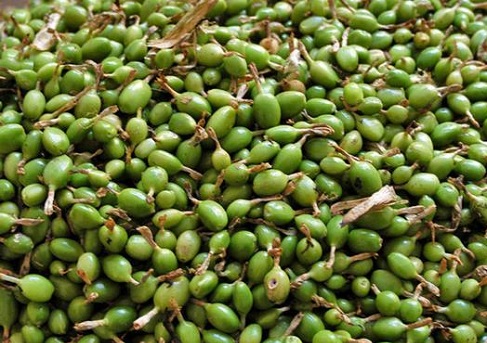
Yield in Cardamom Cultivation:- Yield of small cardamom crop depends on many factors such as climate, soil type, variety, and horticulture management practices. Under ideal crop growing conditions, one can obtain an average Yield of 500 k/ha (dry capsules).

Thanks for this information, there is something I lean from that information
require details regarding integrated pesticide management – IPM for cardamom cultivation